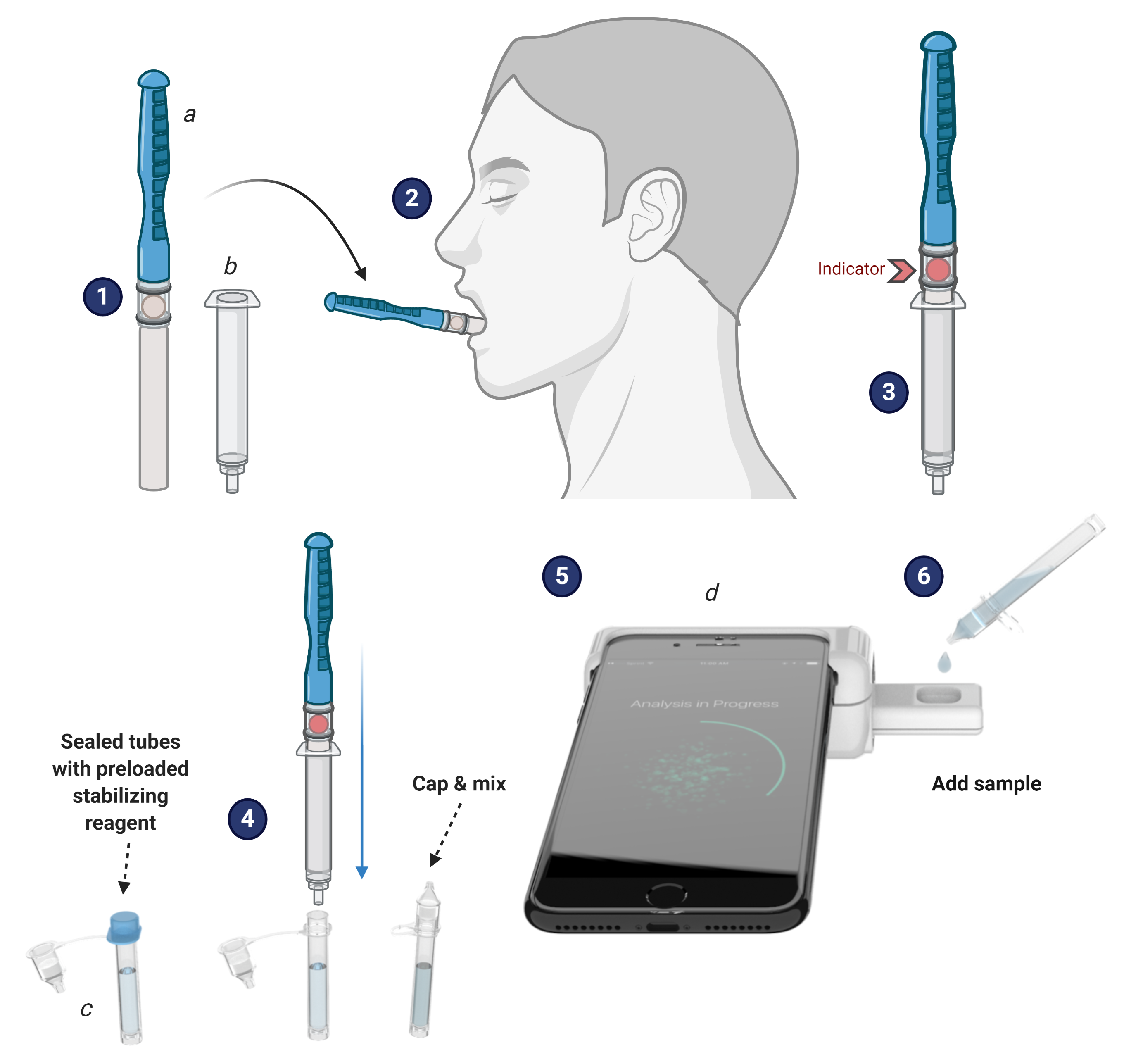NEW YORK: Scientists have developed a portable saliva-based smartphone platform for rapid Covid-19 testing that they claim can provide results within 15 minutes without the resource-intensive laboratory tests.
The new technique detailed in the journal Science Advances pairs a fluorescence microscope readout device with a smartphone to determine viral load from a CRISPR/Cas12a assay.
The new test works as effectively as the well-established quantitative reverse-transcriptase polymerase chain reaction method, the experiments in a small number of participants showed.
“We believe this smartphone platform, a similar future application, offers the potential to rapidly expand Covid-19 screening capacity, and potentially simplify the verification of contact tracing, to improve local containment and inform regional disease control efforts,” the authors wrote.
Most Covid-19 tests currently require swabbing the upper part of the throat behind the nose — an uncomfortable process that requires medical professionals in full protective gear to collect samples in airborne infection isolation rooms before running RT-PCR tests.
However, recent studies have found that SARS-CoV-2, the virus responsible for Covid-19, may be equally present in the nasopharynx and the saliva during early infection, suggesting saliva-based Covid-19 tests could enable comparably reliable but simpler, safer testing.
To develop a widely accessible platform for saliva-based testing, Bo Ning from Tulane University School of Medicine in the US and colleagues built a prototype assay chip that uses the CRISPR/Cas12a enzyme to enhance an amplified viral RNA target’s signal within a saliva sample.
They integrated the chip into a smartphone-based fluorescence microscope readout device, which captures and analyses images to determine whether the virus is present above a threshold concentration.
The researchers used this design to analyse saliva from 12 patients with Covid-19 and six healthy controls, finding that the approach successfully distinguished between patients with and without the virus.
Additionally, the researchers compared nasal and saliva swabs from non-human primates before and after infection.
They found higher SARS-CoV-2 RNA levels in the saliva swabs, further suggesting that saliva may provide a robust means of diagnosis after infection.
Source: IANS


